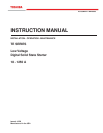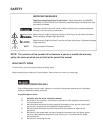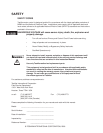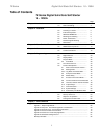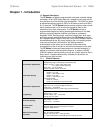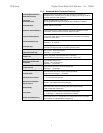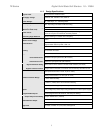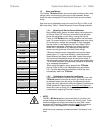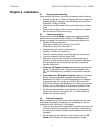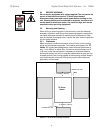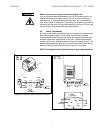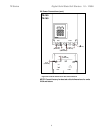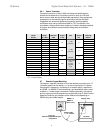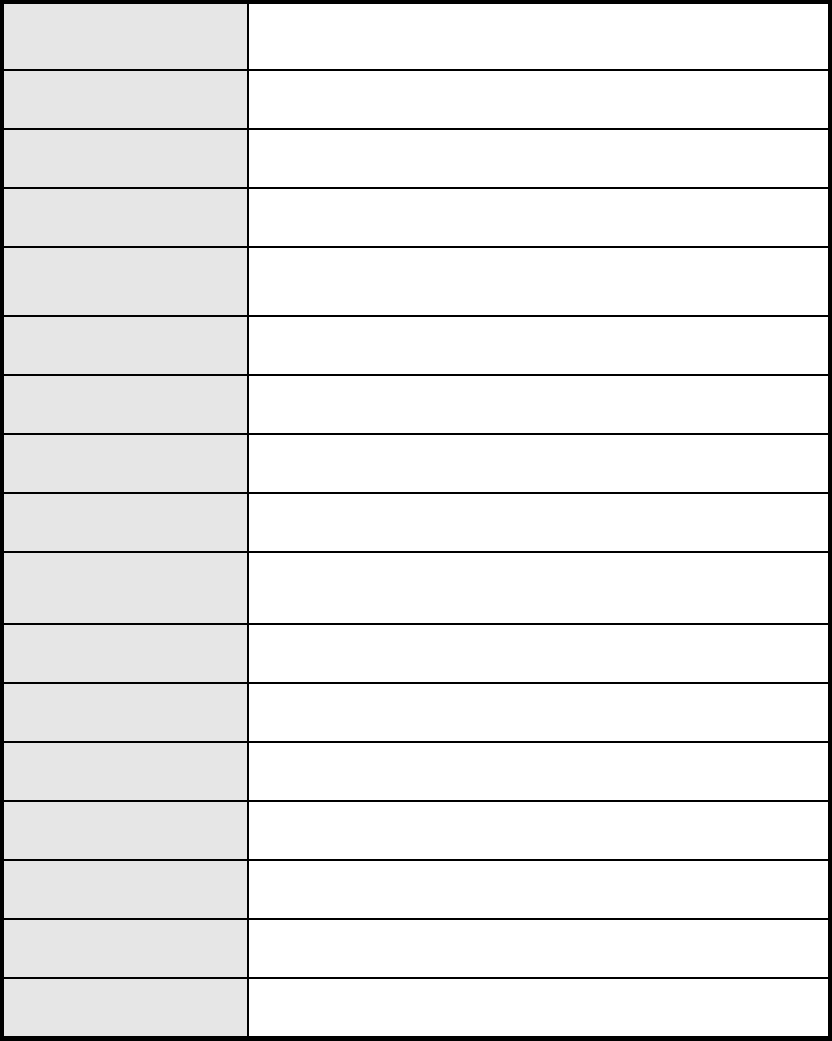
TE Series Digital Solid State Soft Starters 18 – 1250A
2
1.1.2 Advanced Motor Protection Features
Thermal Model Electronic
Overload Protection
A sophisticated Thermal Model of the motor operation is created in the
microprocessor to accurately track all starting, stopping and running conditions
to provide maximum motor protection.
Two Stage
Overload Curves
Starting: Programmable for Class 5 or 10
Run: Programmable for Class 5 through 30 when "At-Speed" is detected.
Overload Reset Manual (default) or automatic
Retentive Thermal Memory
Overload circuit retains thermal condition of the motor regardless of control
power status. Unit uses real time clock to adjust for off time.
Dynamic Reset Capacity
Overload will not reset until thermal capacity available in the motor is enough for
a successful restart. Starter learns and retains this information by monitoring
previous successful starts.
Current Imbalance Trip
Trip Level: 5 - 30% Imbalance in any two phases
Trip Delay: 1 -20 seconds
PTC Input Trip
Trips on greater than 750 ohms resistance on a dedicated PTC input. Can be
used with an Emergency Stop or any other External Lockout.
Over Current Trip
(Electronic Shear Pin)
Trip Level: 50 - 300% of motor FLA
Trip Delay: 1 - 20 seconds
Phase Loss
Trips on any phase current less than 20% of unit rating.
Can be disabled in programming for testing with smaller loads.
Equipment Ground Fault
Protection
Type: Residual Current Trip
Range: 5 – 90% of unit CT ratio
Trip Delay: 1 – 60 seconds
Load Loss Trip
Under Current Trip Level: 10 –90 % of motor FLA
Trip Delay: 1 – 60 seconds
Coast Down (Back Spin)
Lockout Timer
Prevents restart when motor may be spinning backwards
Coast Down Time Range: 1 – 60 minutes
Starts-per-hour Lockout 1 – 10 successful starts per hour
Minimum Time between
Starts Lockout
Range: 1 – 60 minutes between start attempts
Restart Delay
Sequential Start Feature for restarting delay after a power outage.
1-999 seconds after a power loss
Auto Reset
Can be programmed to attempt resetting after selected faults
0 – 10 Attempts, 0 – 999 minutes delay between attempts
Power Device Monitoring
Shorted SCR Lockout (1 shorted SCR) and independent Shunt Trip (multiple
shorted SCRs). Can be disabled in programming.



